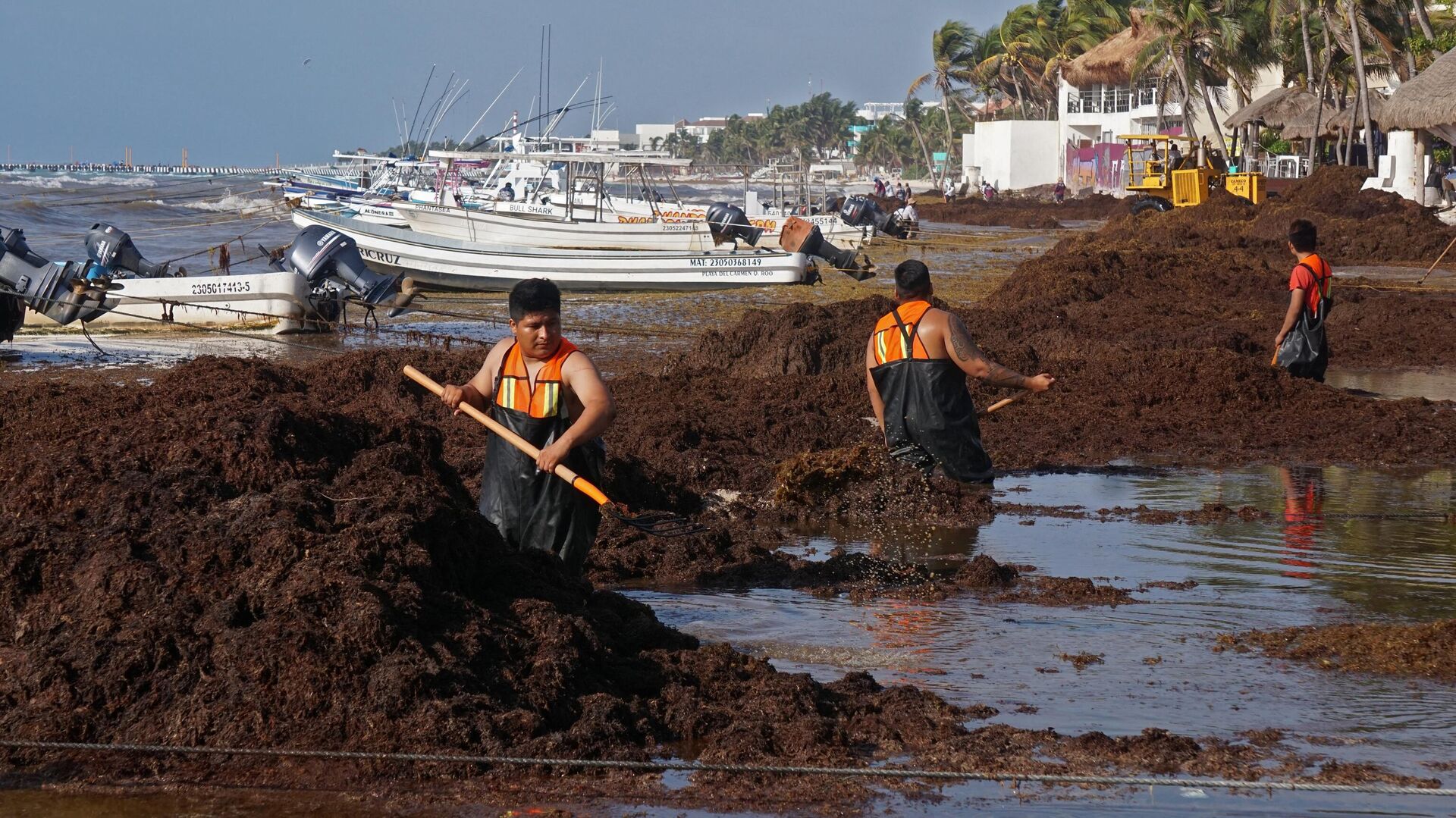Massive Bloom of Stinky, Rotting Seaweed Headed for Florida’s Coast
Subscribe
A large piece of the Great Atlantic Sargassum Belt, a massive growth of floating seaweed stretching from the Gulf of Mexico to the African coast, has broken off and is floating towards the United States.
It’s huge, it’s smelly, and it’s coming right for the Florida coastline.
When it arrives this summer, it will cover beaches in Florida and across the region in piles of brown, tangled seaweed called sargassum, which will then begin to rot. Baking in the sun, the organic mass will release hydrogen sulfide as it decays, which smells like rotten eggs and can aggravate asthma and other respiratory problems.
“It smells very bad and chases away tourists,” Chuanmin Hu, an oceanographer at the University of South Florida who tracks the sargassum blooms via satellite, told US media.
The floating seaweed was once largely confined to a region of the Atlantic Ocean called the Sargasso Sea, which exists in the ocean’s natural northern gyre. However, in recent years, it has begun to grow exponentially in a region to the south of the gyre.
It’s unclear how the Great Sargassum Belt came to be, but scientists think it started growing off the northern coast of Brazil in 2011, where the Amazon River’s enormous discharge into the ocean carries with it tons of nutrients from the river’s alluvium as well as fertilizer from farm runoff.
Every summer since then, the sargassum has grown rapidly in massive rafts that now stretch 5,000 miles from near the Mexican coast eastward across the Caribbean and the Atlantic to off Africa’s western coast. It then breaks up into huge pieces, which slowly wash up on shorelines across the region - shores typically choked with tourists craving the clear waters and hot sun.
Every year the sargassum has gotten worse. Brian Barnes, a researcher with the University of South Florida’s College of Marine Science, told US media that “the low season of the cycle is now higher than the high point of the cycle five or six years ago.”
“The projection that we have for this year is that it’s going to be at least as big, if not a little bit bigger, than last year’s bloom,” he said. “But last year was pretty bad already.”
In Barbados, hundreds of dump trucks patrol the beaches on a daily basis to collect the brown morass; in other places, offshore buoys are being used to try and contain it, with harvesting ships then moving in to gather it up and deposit it. Last year, Barbados received $2 million from the United Nations to fend off the sargassum.
One good thing is that the sargassum soaks up lots of carbon dioxide from the atmosphere, meaning it could play an important role in mitigating the effects of climate change. It’s much more efficient than another great oceanic carbon-capturing plant, phytoplankton, being able to sequester 10 times more carbon with the same amount of nutrients.
“A new project is looking at harvesting it at sea and sinking it to the bottom of the ocean, and in that way sequestering carbon that is used by photosynthesis in the seaweed, sending it to the bottom of the sea where it will be buried,” Brian Lapointe, a research professor at the Florida Atlantic University Harbor Branch Oceanographic Institute, told US media, adding that this would “chip away at the CO2 buildup in the atmosphere.”



